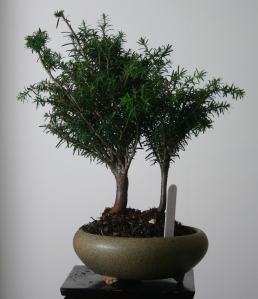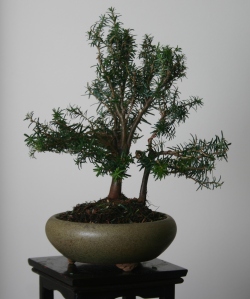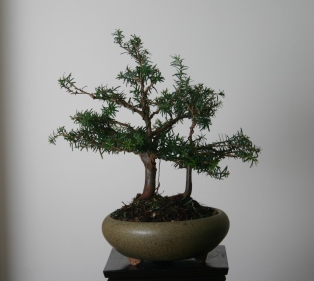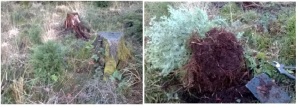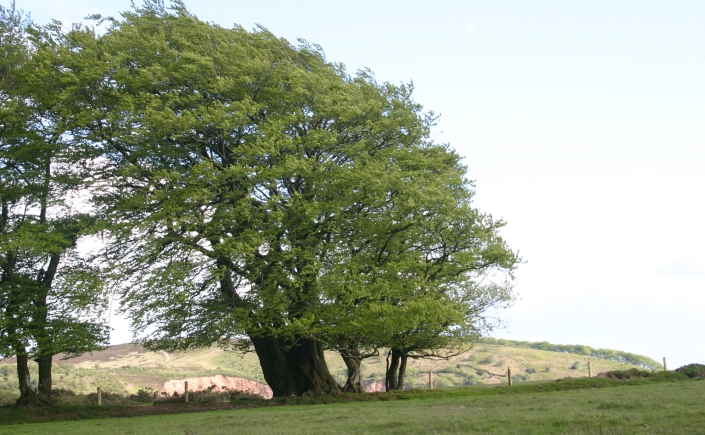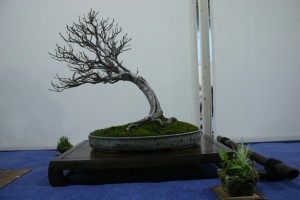Why do you never see many Hemlock in bonsai articles? They are great trees, very hardy and forgiving, small needles with an ability to back bud when healthy, flexible branches and an interesting bark when mature. So what is not to like?
The answer can be seen in that any work on this tree is likely to finish looking a little… scruffy. There is no other word for it, the needles stick out everywhere and the tips of the branches all tend to sag needing a lot more work to produce a beautiful magazine ready image after a session.
Take a wild collected Hemlock (Tsuga heterophylla) like the one above. Planted with two trunks in one with the thought to try something a little different but perfect for demonstrating what I mean. One dominant trunk and a secondary sub-dominant that will become the ‘child’ being nurtured by the loving arms of the parent.
First step was to remove all the dead and damaged branches. There was a reasonable amount of that in the canopy of this because, being a wild tree that had been grazed by deer it is inevitable that many small tips have lost buds and died back. Also the crown is so dense that some of the interior branches have died through lack of light. Once completed there is not much change visually but a little more light through the crown.
The branches have a strong upward tendency that does not work for what I intend to be a more mature image, so the brnaches need to be puled down quite violently. The tree is young, healthy and flexible so with a deal of care it is possible. The first main branch comes down to a more horizontal position to start the styling:
At this stage it was useful to prune and style the small child tree as its position would have less options. Now the position of the main branch the whole composition was in place it was possible to find the correct level for the main foliage pad to be supplied by the small tree. I decided it should be slightly lower to reflect the trees inferior position, but roughly equal in spread from the trunk of the main tree
(below left) Front – Parent is clearly protecting the child with an overall crown that could easily be possessed by a single tree.
(below right) Right Side –the child is closer to the parent but less distinct but a much clear feel that the main tree is embracing the smaller one.
Obviously after such a harsh first style there is some leggy growth that you may wonder why I left it – the Hemlock, like so many other species needs buds at the end of twigs, if it has these it draws vitality through the twig and can flush with back buds, and can then be pruned back. If these straggly twigs are removed now the whole branch could wither. Much better to err on the side of caution in such matters
So in the final images the overall first impression when compared to the result of a session on a nice tidy well behaved pine is… scruffy. But you need to be patient with Hemlock to get the rewards, once the trees throw a cloud of buds and the outlines of the pads thicken you will be pleased I promise.

